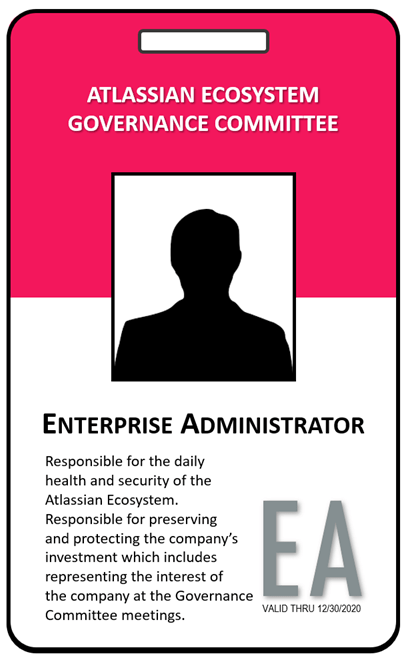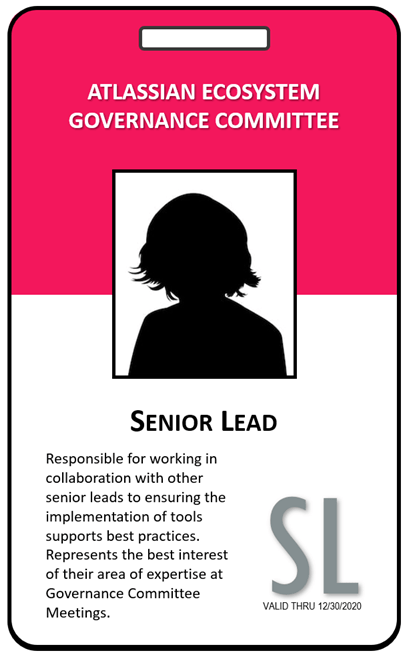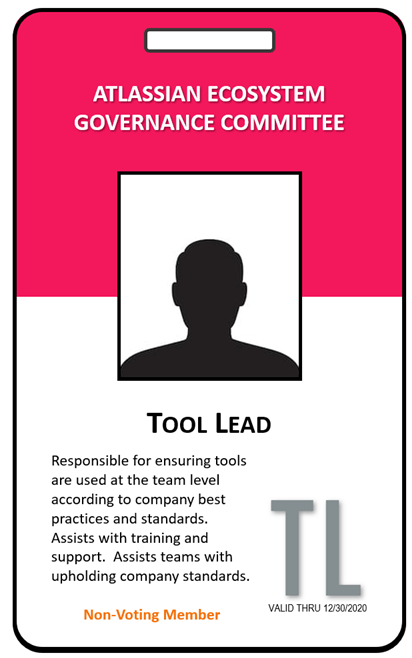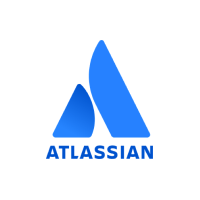Protecting Your Atlassian Tools Ecosystem Investment (Part 2): The Governance Committee
In Part 1 of this Governance series we discussed the governance model and introduced the need for a governance committee, but who makes up this committee and what does the committee and each of its members actually do?
The Committee’s Charter
The Committee’s purpose and primary responsibility is to protect the company’s investment which entails maintaining the health and integrity of the Atlassian Tools Ecosystem. This mandate is critical because of the impacts that even small changes in one system, tool, or application can have on other tools in the ecosystem. The committee is responsible for:
- Governance policies and standards
- Reviewing processes and procedures to ensure alignment to policies and standards
- Defining change request evaluation criteria
- Change requests analysis and decisions
- Implementation and communication of ecosystem change requests
- Communication of tool changes in functionality
- Training programs and enablement
- The company’s adherence to the policies, standards, and best practices
Committee Roles And Responsibilities
The Committee is composed of four key roles and should include an odd number of members for voting purposes. This committee may be small for smaller organizations and only include 3-5 members who wear dual hats. Or, it may be really large to support larger enterprises with some roles even being full time positions. Let’s explore each of the key roles and their responsibilities.
Atlassian accountable executive
Special Considerations for Voting | 1 Person
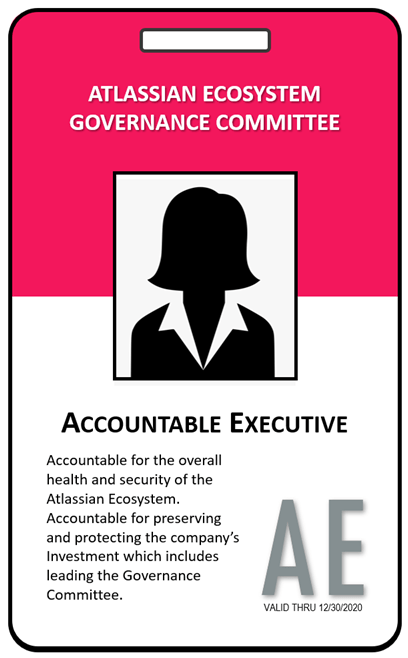
The Atlassian Accountable Executive (AE) is the executive that is accountable for the overall health of the entire Atlassian Tools Ecosystem and should make decisions based on the best interest of the enterprise. Depending on a few key considerations this person may or may not be a voting member. One of the main considerations is the political culture of the company. In a company with a perceived pressure to not “ruffle any feathers” it is never a good idea for the AE to be a voting member. This is because committee members are then less inclined to push back when they believe a bad decision is being made. Instead, they tend to sit back and accommodate leadership’s desires. This behavior may prove to be dangerous for the long term health and stability of your ecosystem.
However, the Accountable Executive will always have final approval authority and will normally make decisions with the recommendation of the Committee.
The AE is accountable for:
- Ecosystem health and stability
- Governance
- Security
- Audit / compliance (sox)
- Risk management
- Approves or disapproves based on recommendations of the committee*
Atlassian stack enterprise administrator
Voting Member | 2-3 People
The Atlassian Stack Enterprise Administrators (EA) are responsible for the overall health of the entire Atlassian Tools Ecosystem and should make decisions based on the best interest of the enterprise. It is highly recommended that every company big or small have two EA’s for continuity purposes in the event that one EA were to leave the company or go out on extended leave. They must have a deep understanding of all tools, how those tools are being used, and how they integrate with one another. They must understand the implications of any changes to any of the tools or applications within the ecosystem on other tools or applications within the ecosystem. Atlassian Stack Enterprise Administrators are voting members which vote based on the best interest of the enterprise or company. They are responsible for the governance, security, compliance, risk management, health, and continuity of the ecosystem.
The EA is responsible for:
- Ecosystem health and continuity
- Governance
- Security
- Audit / compliance (sox)
- Risk management
- Operations, integrations, customizations, etc.
- Upholding governance, standards, best practices, ect.
- Training senior atlassian leads
The EA role is a Full-Time position.
Senior atlassian lead(s)
Voting Member | 3+ People
Senior Atlassian Leads (SL’s) are responsible for helping to ensure enterprise Standards and Best Practices are upheld by their Line of Business, Division, and/or Portfolio(s), and they bring Change Requests to The Committee for discussion. During Committee, the Senior Atlassian Leads represent the needs of their Line of Business, Division, and/or Portfolio(s). They speak about the requests they bring before the committee and they vote on requests which are brought by other SL’s. Other key stakeholders such as each Tool’s Subject Matter Expert for the company and Enterprise Agile Transformation Lead may also hold a Senior Lead position. Senior Atlassian Leads wear dual hats; before The Committee they represent their area, but before their area they represent the enterprise or company. It is the responsibility of SL’s to ensure that their areas are well educated on the enterprise or company standards, requirements, and best practices. They also provide training and assistance to their areas and their embedded Tool Leads (this role is discussed next).
- The Various SL’s are Responsible for:
- Ensuring their line of business, division, portfolio(s) upholds enterprise standards and best practices
- Providing leadership, support, and training to their division’s and program’s and their area’s tool leads
- Determine if a change request should be brought before the committee and if so, bring change requests before the committee for discussions and decisions representing their division during change discussions
- Vote on changes and provide change impact analysis and perspective as needed
- Provides support to their line of business, division, and portfolio(s) as needed and as outlined in the enterprise standards and best practices
Tool lead(s)
Non-Voting Member | Unlimited
Tool Leads may be Subject Matter Experts or Power Users on one or more specific tools. For example, you may have a Jira Tool Lead and you might also have a Bitbucket Tool Lead, but you could also have a single person that is both the Jira and Bitbucket Lead depending on the expertise of the individual. Tool Leads are responsible for helping to ensure enterprise Standards and Best Practices are upheld by their Departments and Teams, and they provide first line help to their Departments and Teams. Tool Leads may also bring Change Requests to their Senior Atlassian Lead.
- The Various TL’s are Responsible for:
- Ensuring their area upholds enterprise standards and best practices (team, program, department, etc.)
- Bring change requests to their senior atlassian lead
- Providing support and training to their area: navigating Jira and Jira Align, creating dashboards, creating reports, creating JQLsaved search filters etc.
Conclusion
Now that you know the roles and responsibilities of the committee members, stay tuned for Part 3 of the series where we discuss the committee’s activities such as committee meetings, change request evaluations, and communications.
